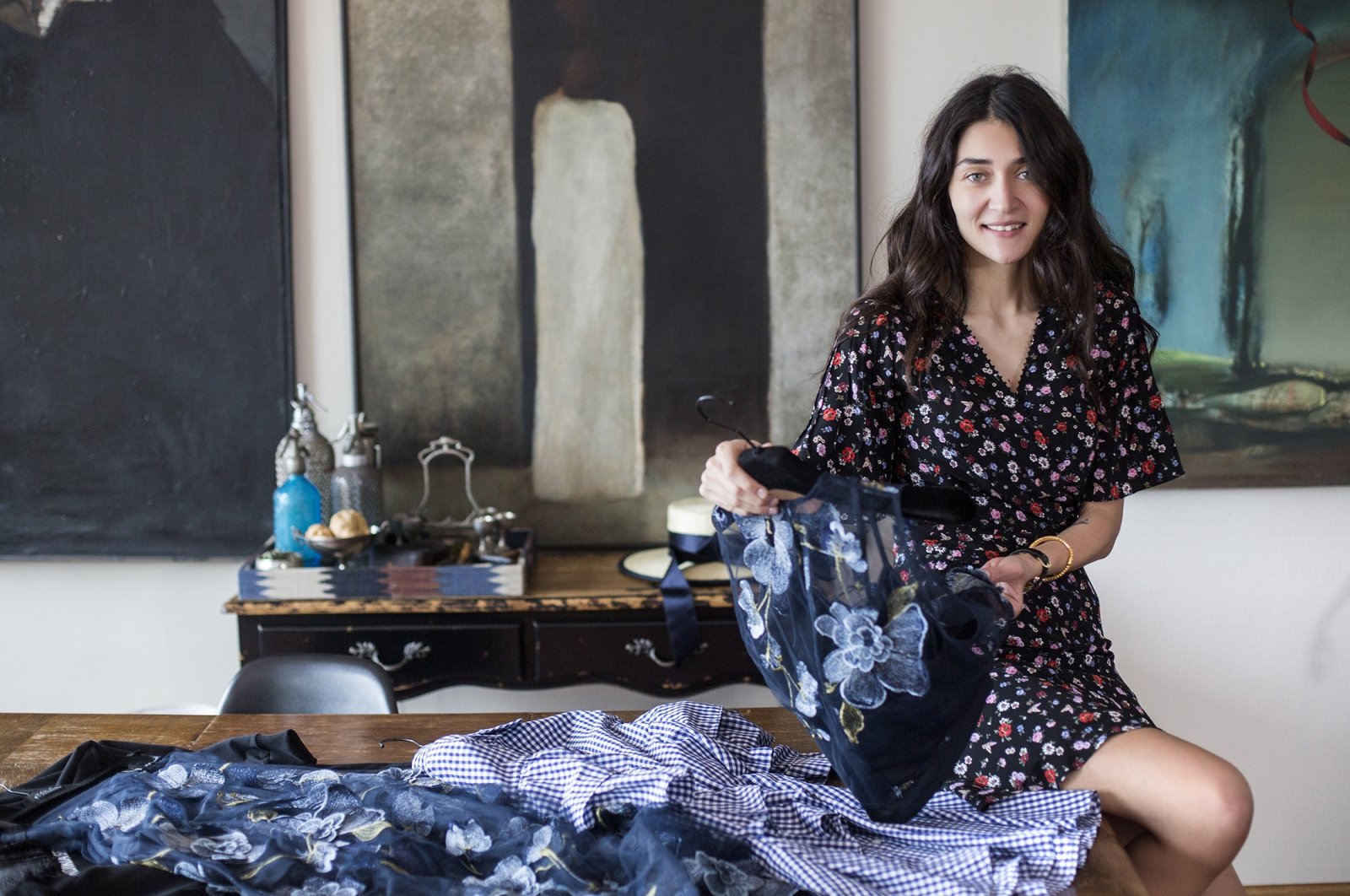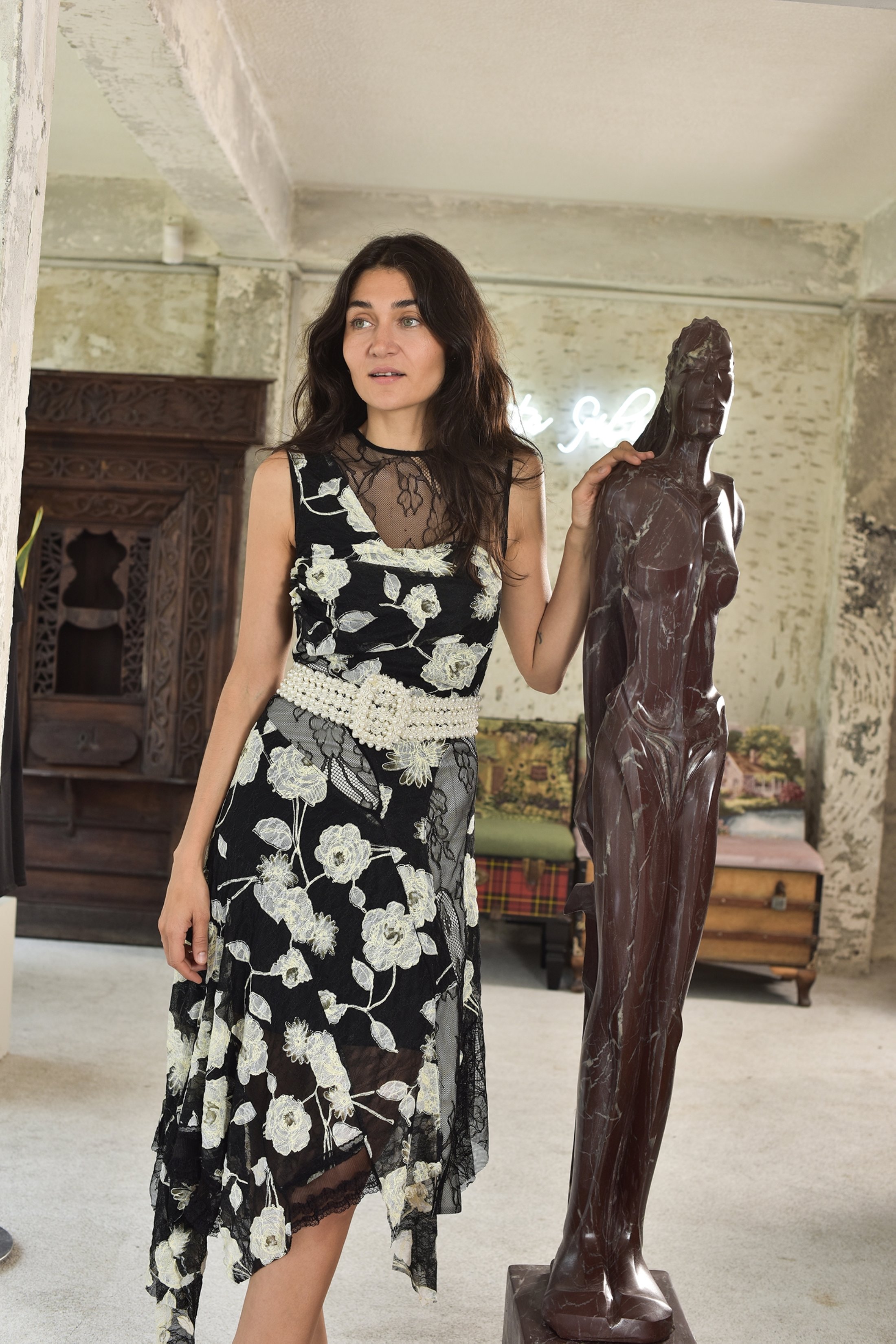
The adventure of fashion designer Aslı Filinta in world design during her education in the U.S. has brought her to an impressive place where fashion, art, crafts and taste meet
Have you ever heard of fashion designer Aslı Filinta? The designer, who was awarded the Young Designer award at the clothing fair Who's Next, is known for being inspired by traditional Turkish and Ottoman art and using historical figures in her designs.
In an interview with Filinta in 2017, regarding her increasing inclination toward Ottoman and Turkish culture, she said: "I have traveled to various parts of the world. I have lived for years in New York, where different cultures meet. In my opinion, to belong to a country, you need to know and adopt the culture and history of that country. While living abroad, people ask you questions about your country and maybe you are even more connected to your country and doing research. Over time, this has become an important part of my designer identity. Researching my history, culture and roots has become a great passion."
And even in those days, she commented: "Whichever of the developed countries of the world you go to, they all say, 'Our brands come first.' The best brands and designers for Italians are Italian. If you go to the U.S., there are already certain quotas for foreign designers, even in luxury chain stores. Even magazines have this limitation. For Türkiye to show itself in the world fashion arena, it must invest more in its designers. Turkish brands are opening up to the world. Just as Turkish TV series have brought more attention to our country in different parts of the world, the strengthening of Turkish brands and designers will strengthen us so much."

For inspiration, she turned to local fabrics, weaving techniques and especially to old works left in dowry chests. She blended these with upcycling techniques, now increasingly used worldwide, and turned them into reused, contemporary and timeless pieces. She went beyond being a fashion designer and brand creator and managed to build a community of like-minded people. She re-updated and made usable the fine works, clothes and dresses left over from previous generations with the upcycling service she provided. Now, she has started her fashion education in the United States, and her fashion adventure pushed her to examine the Anatolian lands even more deeply and to reinterpret these studies. The designer is coming up with a completely different project for this summer, one even more ambitious. And this time, not only as a fashion designer.
The project, located in Çeşme Marina, which will include a retail section, a performance area, a restaurant and a bar, is called "Aslı Filinta in Dreams." It is set to open its doors during the Qurban Bayram, also known as Eid al-Adha. It is a project consisting of completely local handicrafts, women's employment, collective benefit, recycling, upcycling, embodying the values of our land, environmentalist approach, sustainability and design concepts. The tablecloths used in the restaurant are entirely handcrafted, for example. The style of the entire restaurant is designed to consume the least amount of electricity and includes no plastic or one-use bags.
The designer shared some of the surprising details she encountered while describing her project: "We have embraced everything that does not belong to us with such a naturalness that I saw this even during the landscaping of our project. We had to underline many times that we wanted a landscape made of plants from the Aegean region. They offered us bonsai ... There are only local fish and delicacies in the restaurant ... We didn't want to set up a menu with Norwegian salmon."
Of course, there are products signed by Aslı Filinta in the retail section. But there are also the designs of Hayri Usta, the world-famous Yemenici in Gaziantep, sandals knitted by local craftsmen from banana fiber as well as bead bags knitted by hand in the prison in Sinop and knitwear among the products to be sold. With the QR code, it is possible to learn the origin of each product and the story behind it.
I asked Filinta: "When did this wide-ranging project start? It is not a step expected from a fashion designer; is it not surprising?" She told me: "It is not possible to continue the business with the old business systems. New ways had to be found. Our story brought us here."
She explained the values that brought her on this path, the lands she was born in, and the culture she was nurtured in. "We can say that perhaps the steps of this project were taken years ago. My passion for 14 years has been to discover Anatolian culture and traditions. To love these lands, to explore, to know, to unearth. And then to introduce it, to make it be discovered, to make it popular. To convey all this information to new generations ... To be able to do all this with a certain design perception. Life in this geography began 15,000 years ago. Geography with no end and endless stories ... Stories from all over the world have been consumed to end, but this is impossible here in this geography ... because it is endless. There is a natural perception of sustainability in this geography ... In the story of shearing animal hair, which is the origin of fabrics, in women's manual labor. And there is no discrimination of religion, language, or race. If you look at the essence of Anatolia, its origin is a natural story of handicraft and sustainability. As we learn about historical traditions, return to our core, adopt the values we have, and understand and assimilate all these values that surround us, this becomes more evident. It is possible to see it clearly."
Filinta added that the design, genuine sustainability and values in her own brand DNA have been firmly grounded in all these years and perfectly match her current project.
